Productive Zone of Disequilibrium
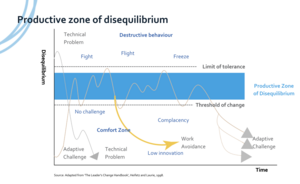
When you raise a difficult issue or surface a deep value conflict, you take people out of their comfort zone and raise a lot of heat. That is tricky business.
Goal
To practice adaptive leadership, we have to help people navigate through a period of disturbance as they sift through what is essential and what is expendable, and as they experiment with solutions to the adaptive challenges at hand.
Instructions
Productive zone of disequilibrium
Introduction (no slide)
To practice adaptive leadership, we have to help people navigate through a period of disturbance as they sift through what is essential and what is expendable, and as they experiment with solutions to the adaptive challenges at hand. This disequilibrium can catalyse everything from conflict, frustration, and panic to confusion, disorientation, and fear of losing something dear.
That is not what you are paid to do and will certainly not be as well received as when you are mobilising people to address a technical issue that is within their competence or requires expertise that can be readily obtained. Consequently, when you are practicing adaptive leadership, distinctive skills and insights are necessary to deal with this swirling mass of energies. You need to be able to do two things: (1) manage yourself in that environment and (2) help people tolerate the discomfort they are experiencing. You need to live into the disequilibrium.
Collective and individual disequilibrium is a by-product generated when you call attention to tough questions and draw people’s sense of responsibility beyond current norms and job descriptions. Of course, organisations and individuals like to stay in their comfort zone. When you raise a difficult issue or surface a deep value conflict, you take people out of their comfort zone and raise a lot of heat. That is tricky business.
You have to continually fiddle with the flame to see how much heat the system can tolerate.
SLIDES XX: PRODUCTIVE ZONE OF DISEQUILIBRIUM
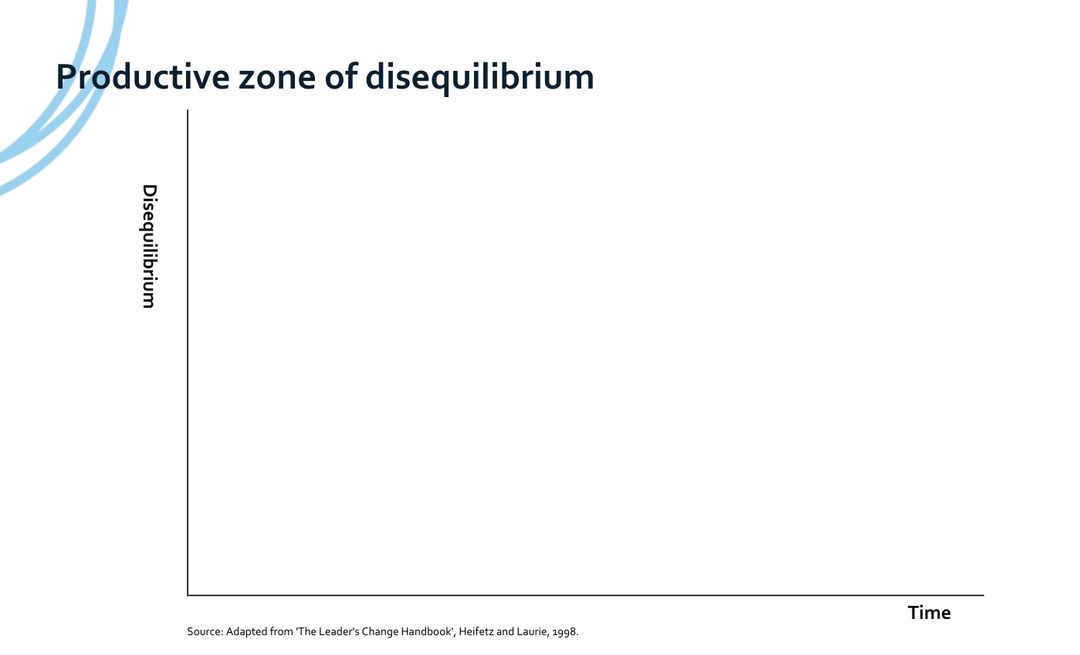
SLIDES XX: COMFORT ZONE
If the disequilibrium is low in a team or organisation, what does it feel / look like?
How much change happens? Not much!
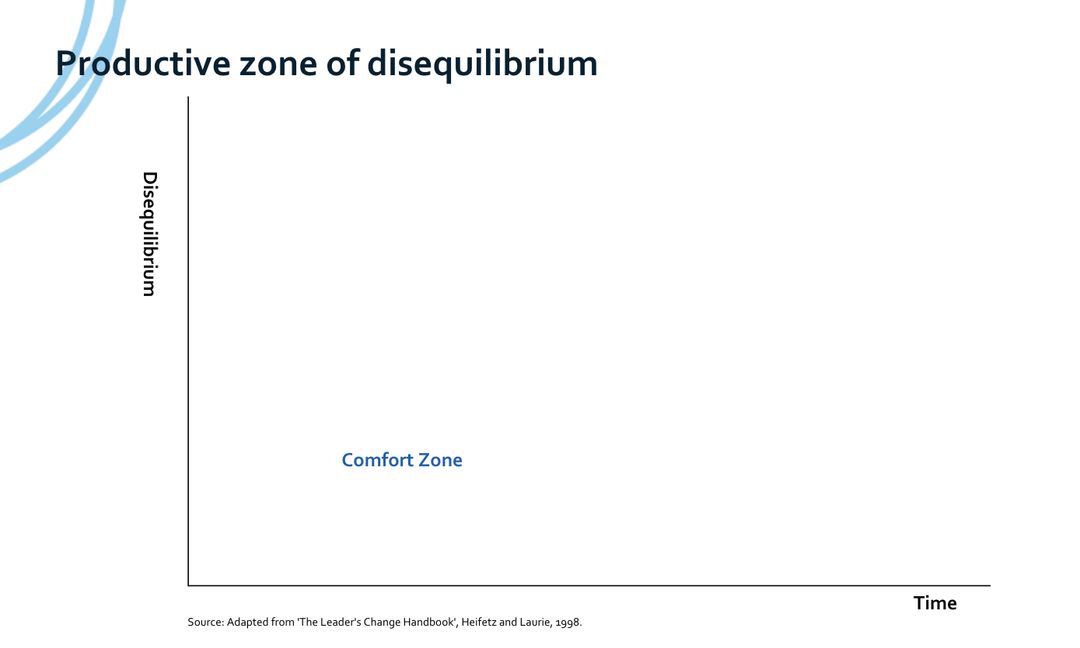
SLIDES XX: THRESHOLD OF CHANGE/TOLERANCE
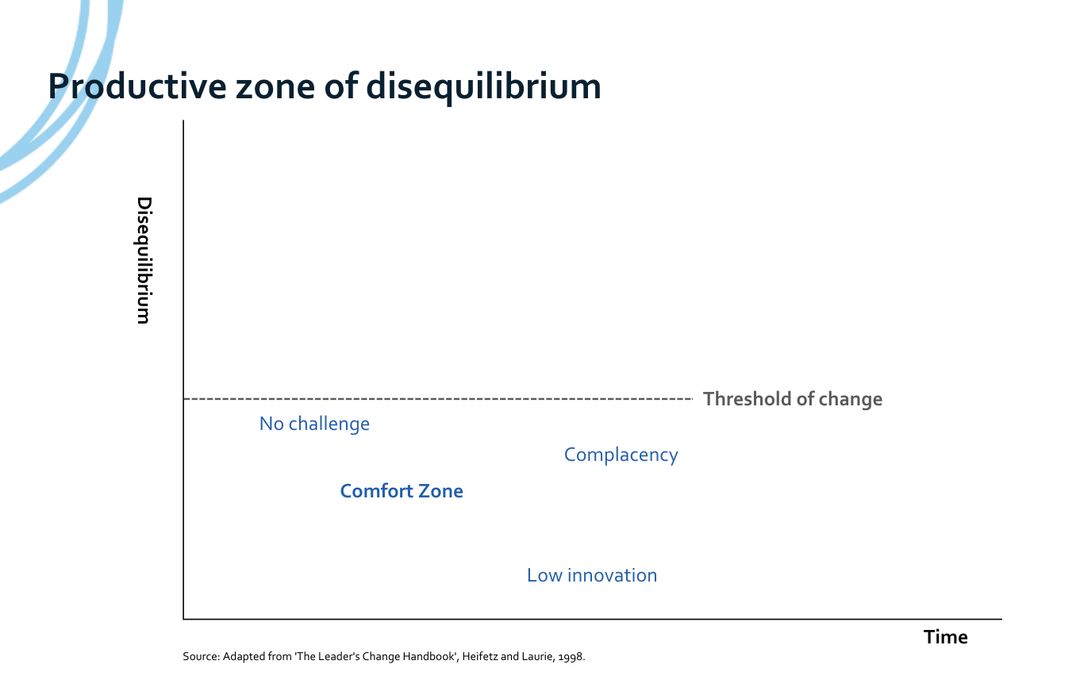
Your goal should be to keep the temperature within what we call the productive zone of disequilibrium (PZD): enough heat generated by your intervention to gain attention, engagement, and forward motion, but not so much that the organization (or your part of it) explodes.
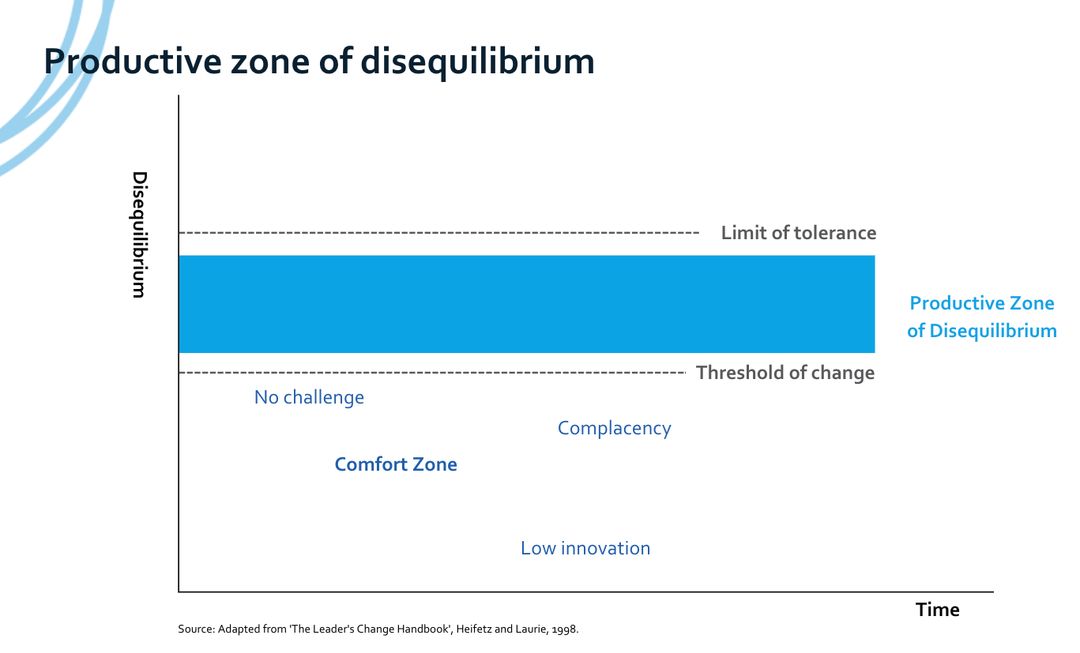
It is like a pressure cooker: set the temperature and pressure too low, and you stand no chance of transforming the ingredients in the cooker into a good meal. Set the temperature and pressure too high, and the cover will blow off the cooker’s top, releasing the ingredients of your meal across the room. It helps to think of yourself as keeping your hand on the thermostat, carefully controlling how much heat and pressure is applied.
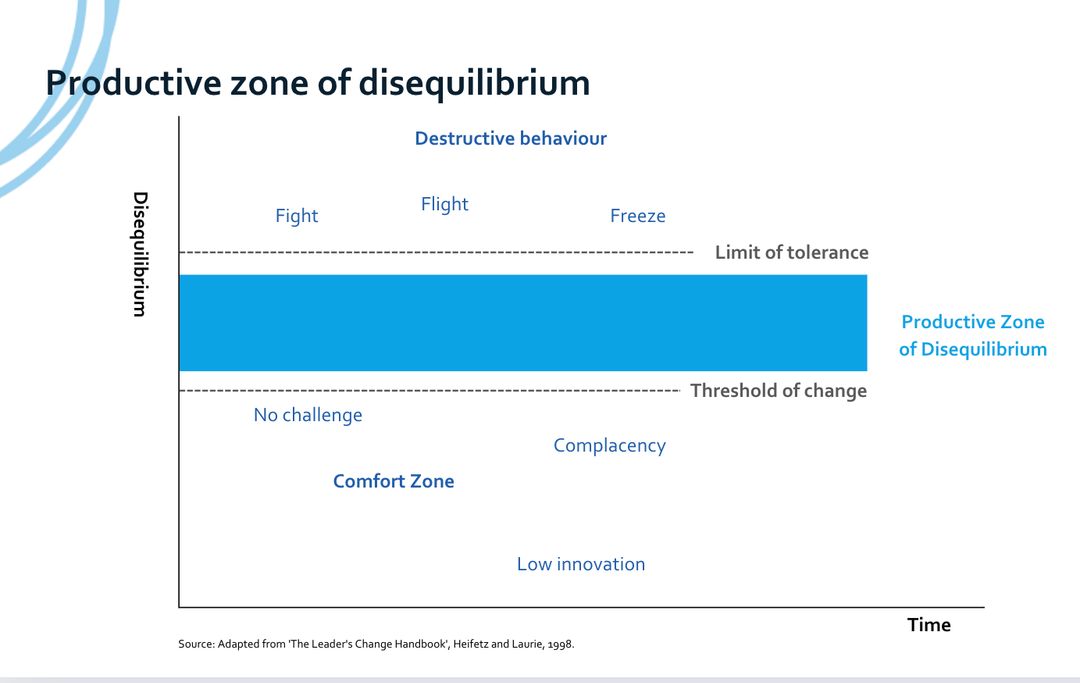
SLIDE XX: TECHNICAL CHALLENGES
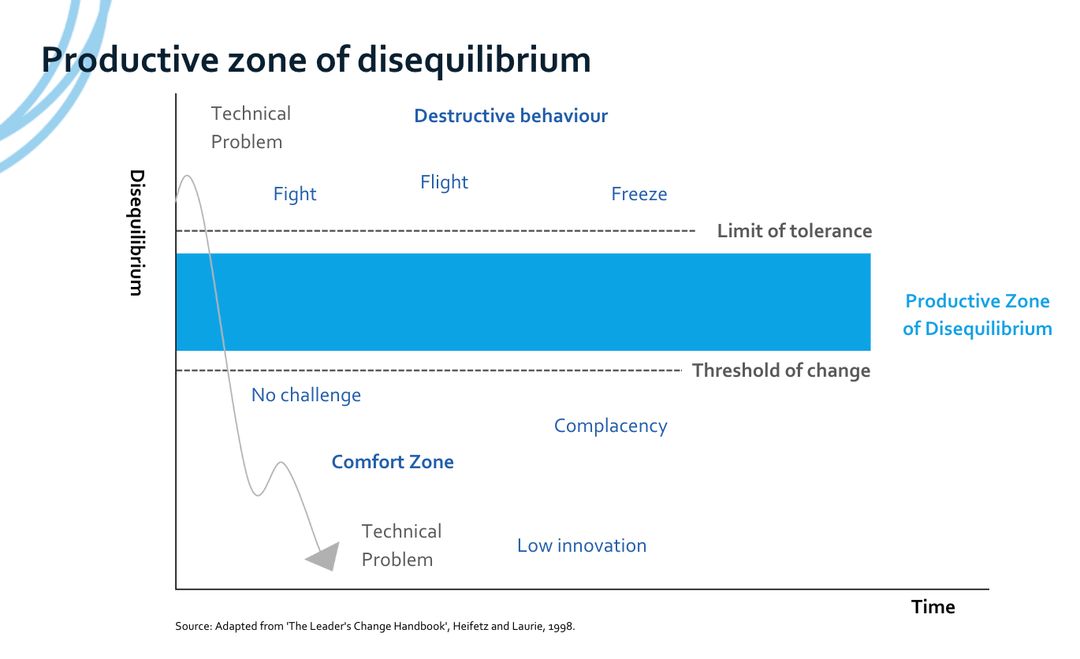
The technical problem line represents the changes in disequilibrium as an organisation deals with a technical problem.
SLIDE XX: ADAPTIVE CHALLENGES
The adaptive challenge line shows changes in disequilibrium as the organization deals with an adaptive challenge.
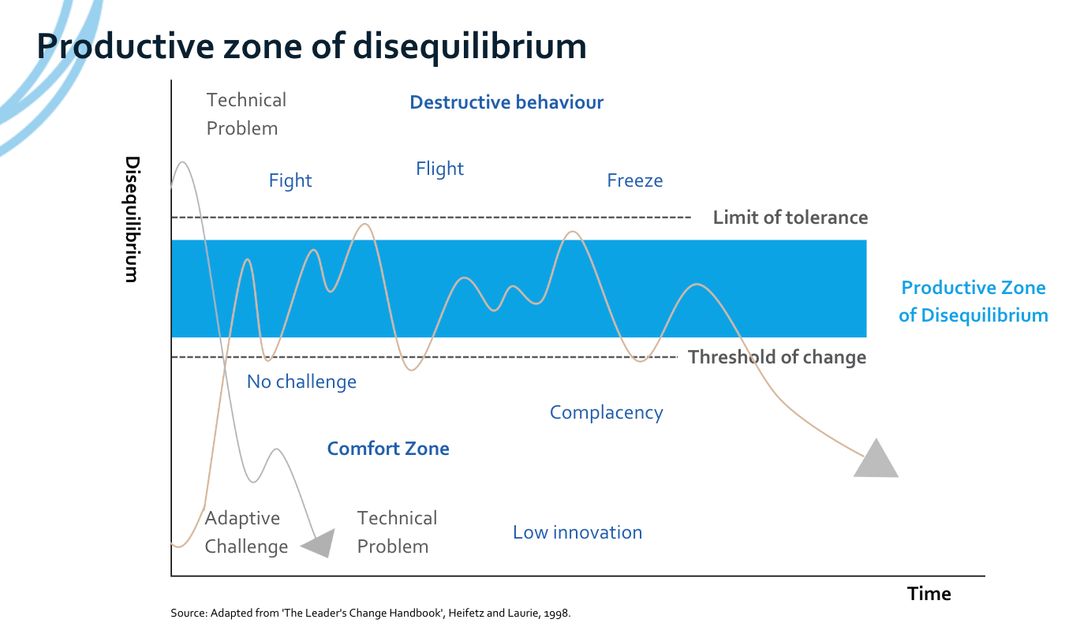
The horizontal bar constitutes the productive zone of disequilibrium. Below the PZD, people are comfortable and satisfied. Above the PZD, the disequilibrium is so high, things are so hot, that tensions within the organization reach disabling proportions. Within the productive zone, the stress level is high enough that people can be mobilised to focus on and engage with the problem they would rather avoid. The dotted work avoidance line represents the easing of disequilibrium as the organisation avoids dealing with hard issues. Look again at the technical problem line. To illustrate how disequilibrium changes with a technical problem, say you break your leg skiing. At that moment, the disequilibrium is at its peak, virtually intolerable. You are lying in the snow, freezing and in awful pain, and people are skiing by you. Then those nice folks from the ski patrol come by with a stretcher, a blanket, sympathy, and even a shot of whiskey if you want it. The disequilibrium lessens to a more tolerable level. It may go up again while you’re waiting for the doctor in the emergency room, and again when you have to endure a few months of painful rehabilitation exercises. But overall, it decreases, finally disappearing once you are healed.
The disequilibrium pattern for an adaptive challenge is very different. At the beginning, disequilibrium is low. You have identified an adaptive problem that you know the company should address, but most people around you either do not see it or see it but do not want to deal with it.
You need to raise the heat to the point where the discomfort of not dealing with the problem is the same as or more than the discomfort that would come from any nasty consequences of not addressing the problem. That is, you need to get the group into the PZD. Things soon become a lot less linear when you are dealing with an adaptive challenge. The intensity of the disequilibrium rises and falls as you push your intervention forward.
Sometimes it will seem that you are taking one step back for every two steps forward. Clearly, you need patience and persistence to lead adaptive change.
The question to ask yourselves of course is how hot your leadership challenge? What temperature is needed? You might be the only person who cares about it!
SLIDE XX: WORK AVOIDANCE
We also have to anticipate and counteract tactics that people will use to lower the heat to more comfortable levels.
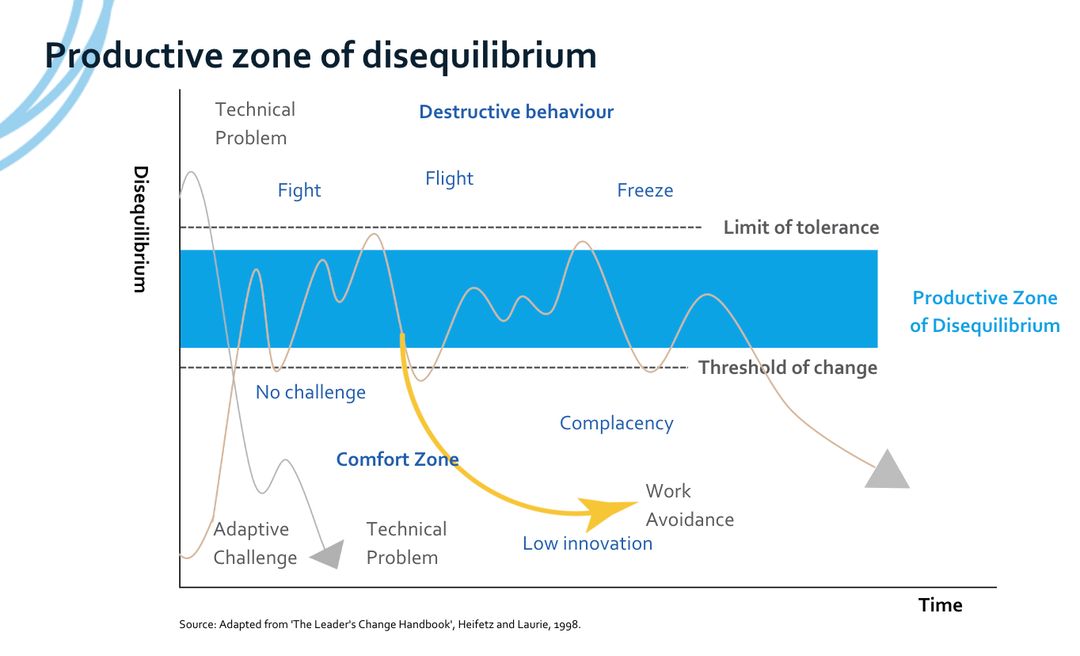
This work avoidance can take numerous forms, such as creating a new committee with no authority or finding a scapegoat. Unlike with a technical problem, there is no clear, linear path to the resolution of an adaptive challenge. You need a plan, but you also need freedom to deviate from the plan as new discoveries emerge, as conditions change, and as new forms of resistance arise.
Once you help unleash the energy to deal with an adaptive issue, you cannot control the outcome. That is why there are several possible outcomes at the end of the adaptive challenge line. Doing this work requires flexibility and openness even in defining success. The pathway is not a straight line, and because working through an adaptive challenge will always involve distributing some losses, albeit in the service of an important purpose, the systemic dynamics that ensue, the politics of change, will have many unpredictable elements.
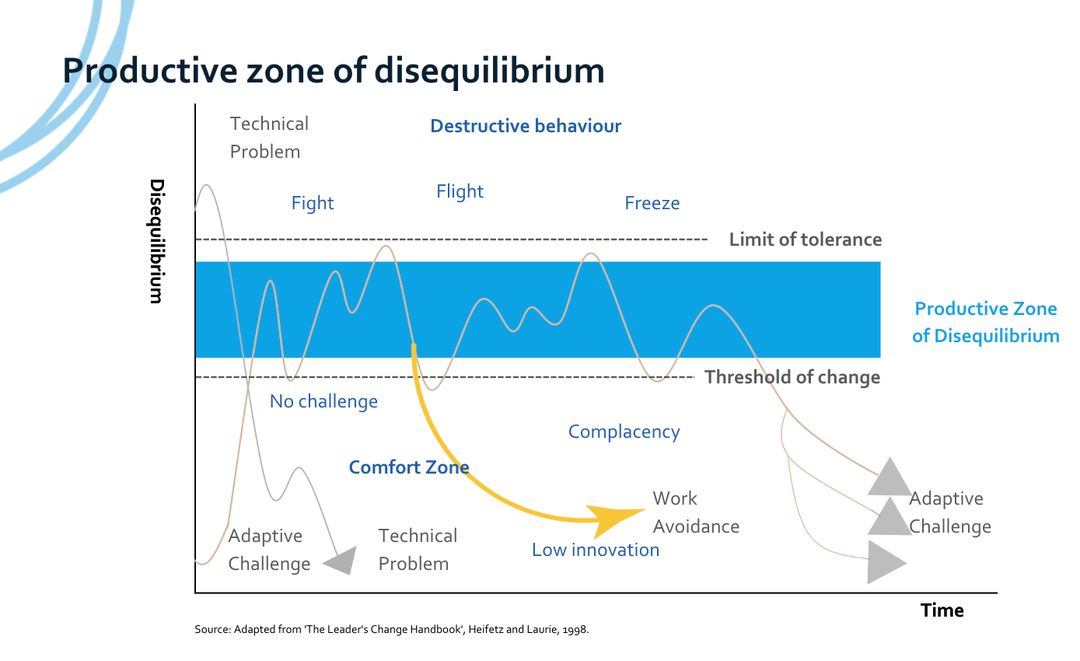
The pathway for getting to an adaptive resolution will look a bit like the flight of a bumblebee, so that at times you will feel as if you are not even heading in the right direction. And the resolution might be quite different from what you first imagined.
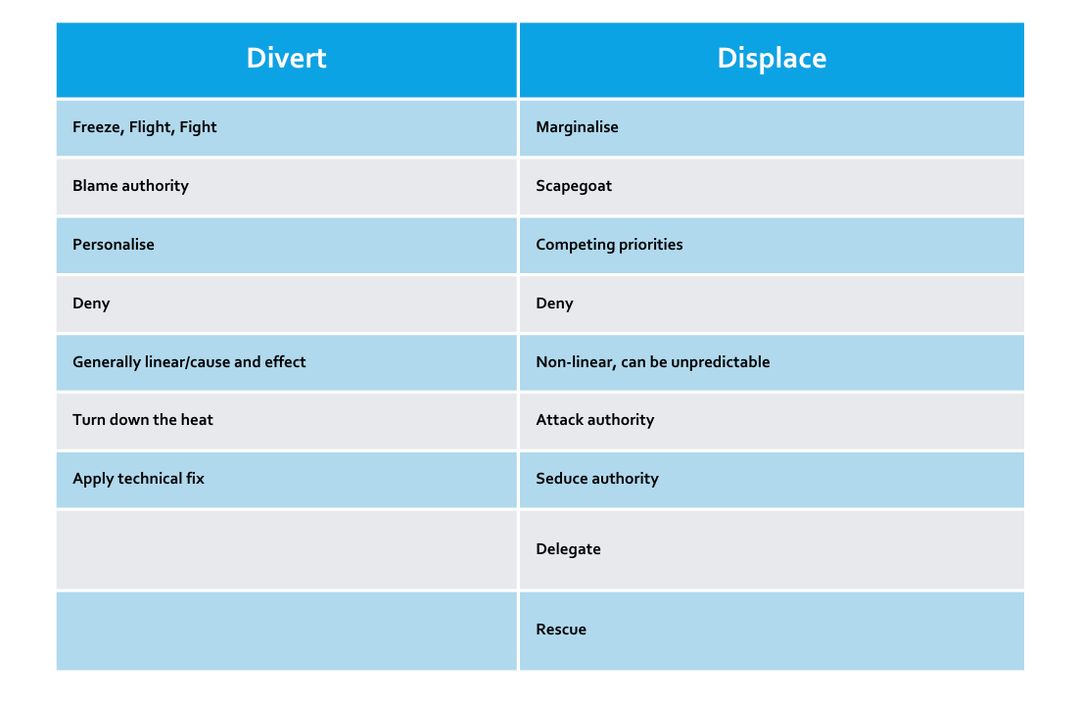
Link back to….this is where the Observe, Interpret and Intervene cycle is so important.
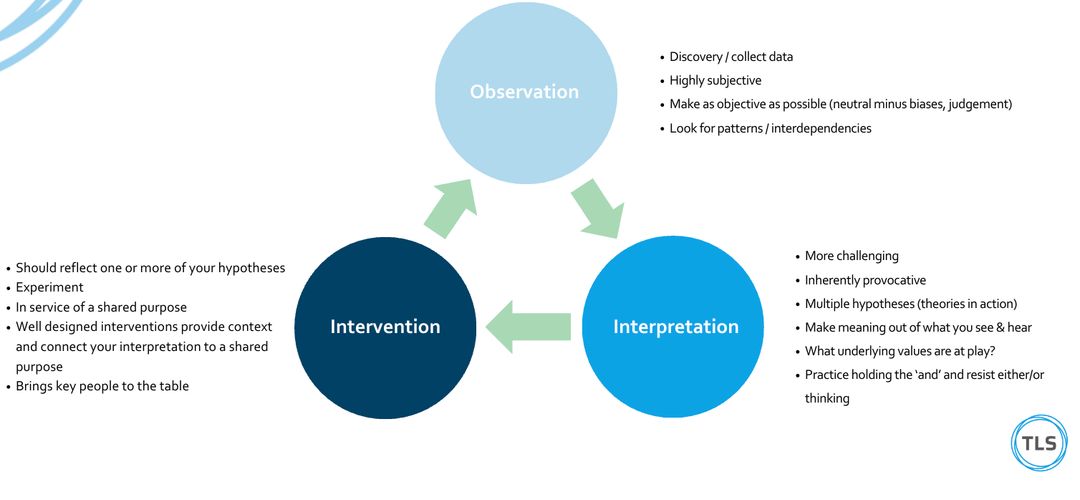
Adaptive leadership is an iterative process involving three key activities: (1) observing events and patterns around you; (2) interpreting what you are observing (developing multiple hypotheses about what is really going on); and (3) designing interventions based on the observations and interpretations to address the adaptive challenge you have identified.
Each of these activities builds on the ones that come before it; and the process overall is iterative: you repeatedly refine your observations, interpretations, and interventions.
Attachments
- Screenshot 2024-06-28 at 2.21.13 pm.png
- Screenshot 2024-06-28 at 2.20.30 pm.png
- Screenshot 2024-06-28 at 1.30.32 pm.png
- Screenshot 2024-06-28 at 2.16.41 pm.png
- Screenshot 2024-06-28 at 2.15.39 pm.png
- Screenshot 2024-06-28 at 2.14.44 pm.png
- Screenshot 2024-06-28 at 2.13.55 pm.png
- Screenshot 2024-06-28 at 2.12.55 pm.png
- Screenshot 2024-06-28 at 2.10.35 pm.png
- Screenshot 2024-06-28 at 2.07.48 pm.png
- Screenshot 2024-06-28 at 2.07.18 pm.png